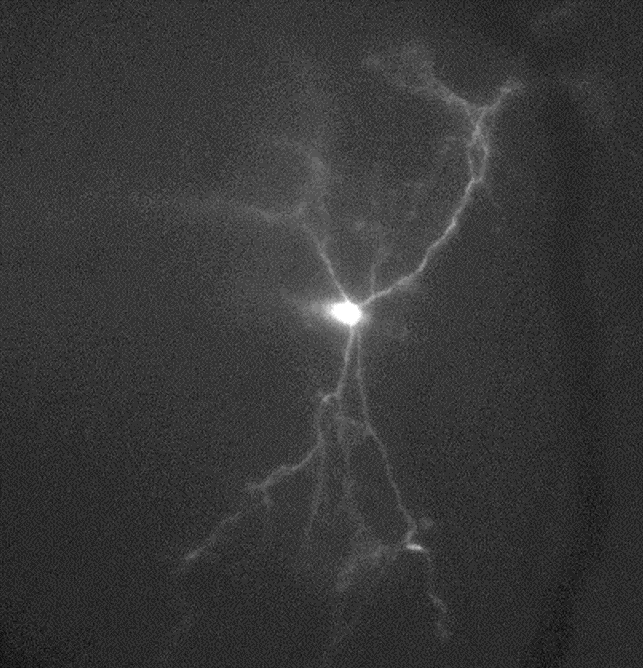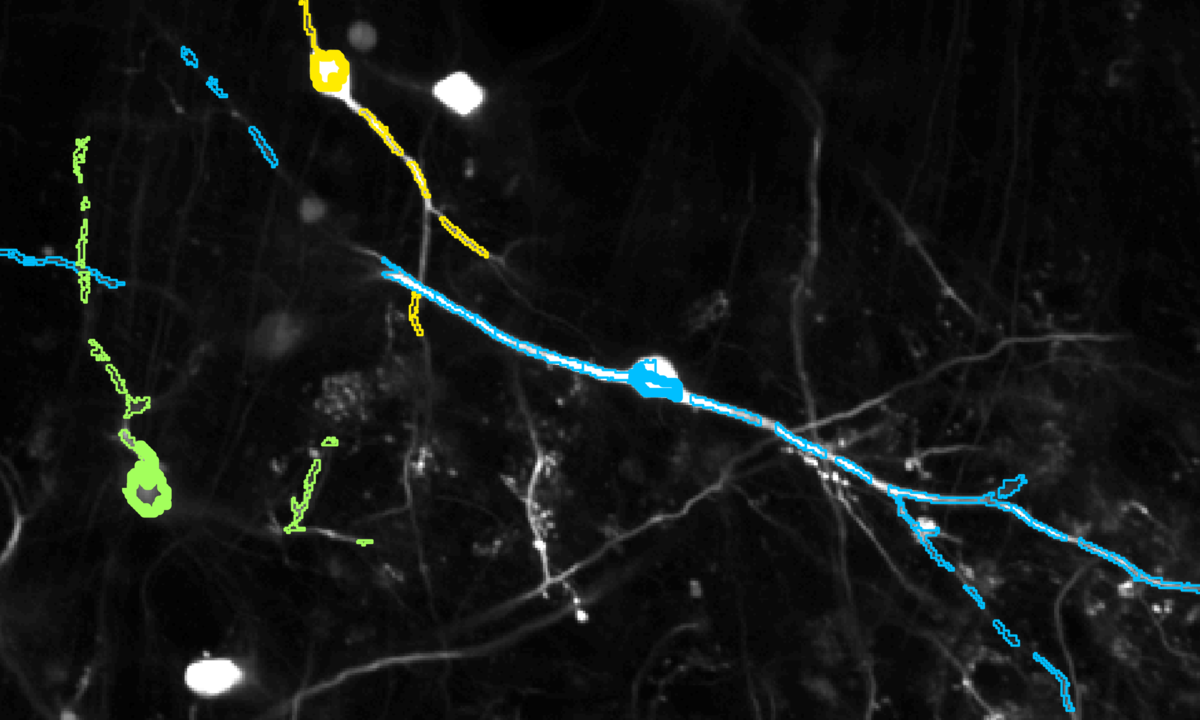Thalamic interneurons have different views – new insights into how the brain integrates visual information
All sensory stimuli—with the exception of smell—pass through the thalamus before reaching the cerebral cortex, which is the part of the brain that governs cognition. A small part of the thalamus, the dorsolateral geniculate nucleus (dLGN), mediates image perception.
The dLGN contains two different neuron types, one of them being so-called interneurons that help to control the flow of visual information from the retina to the cortex. Interneurons exert this control by delaying, dampening, or even blocking the activity of their partner cells – an effect called inhibition. Situated at the first post-retinal synapse, the dLGN interneurons are exquisitely positioned to modify information early in the image-forming pathway. However, little about their in-vivo function was known.
Earlier in-vitro evidence had suggested that dLGN interneurons act as “multiplexors” that interact with many different types of visual information. But the IOB team’s findings challenge this model. “We found that dLGN interneurons are far more specialized towards certain types of information than expected,” says Fiona Müllner, a senior post-doctoral researcher at IOB, and the paper’s first author.
To test the “multiplexor” hypothesis, the IOB researchers first developed a strategy for mapping retinal inputs to dLGN interneurons in mice. Known as single-cell-initiated rabies tracing, this precise and technically demanding method can visualize the connected partner neurons that talk to one single neuron in the brain. In addition, the team developed a novel machine-learning-assisted approach to characterize the retinal inputs. And finally,using a method called two-photon calcium imaging, they developed a technique for recording the activities of dLGN interneurons in vivo while the mice were watching movies. The combined use of these methods revealed that dLGN interneurons do not fit into the previously assumed “multiplexor” model. Instead, the cells are specialized towards diverse subsets of visual information from the retina that result in diverse response selectivities (also called visual “features”). For instance, individual dLGN interneurons were highly selective for motion in certain directions (a visual feature called direction selectivity). That selectivity, in turn, depended on the direction selectivity of the cells’ retinal inputs.

(c) Institute of Molecular and Clinical Ophthalmology Basel (IOB). Quelle: Neuron
In trying to discern the in-vivo relevance of this finding, the team faced a biological puzzle. Most other neurons in the brain talk to their downstream partners by sending impulses along their axons. However, dLGN interneurons contact most of their downstream partners along their dendrites, which are, at the same time, the input-receiving antennae by which the cells listen to their partners upstream. To better understand the types of information communicated by dLGN interneurons, the researchers traced the activity of individual interneurons along their dendritic processes, which spread out across the dLGN. Intriguingly, the neuronal specializations--or feature-selectivities--extended from the somata far into the dendrites. “This suggests that the interneurons are capable of performing feature-selective inhibition," Müllner says.
Based on these results, the IOB researchers proposed a new "selector" model by which dLGN interneurons limit the information they receive to defined subsets of visual inputs. “Our evidence supporting the selector model provides new insights into how interneurons interact with visual information," Müllner says. By performing feature-selective inhibition of sensory inputs from the retina, interneurons might dampen certain aspects of a visual scene, Müllner says, such as horizontal patterns over vertical ones. The IOB team predicts that feature-selective inhibition by interneurons may also be important for cognitive processes such as feature-selective attention. The eyes take in more visual information than can be processed all at once. Feature-selective attention allows the brain to focus on relevant imagery – such as objects with a particular shape or movement direction – so that individuals can deploy attentional resources on the information needed to perform a given task.
"Our findings are relevant in a broader perspective for understanding how the brain actively filters out or interferes with the information we perceive," says Müllner.
"The dLGN is one of the most mysterious parts of the visual system," adds Müllner's co-author Botond Roska, director of the IOB. "One of the next steps will be to understand how the activity of interneurons contributes to visual behavior."
Source: IOB
Neuron: Fiona E. Müllner. Botond Roska. Individual thalamic inhibitory interneurons are functionally specialized toward distinct visual features
